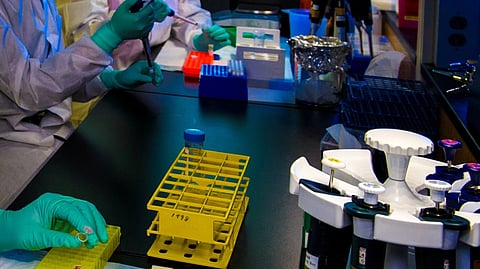

Smart voice assistants are a popular way for people to get quick answers or play their favorite music. That same technology could make the laboratory safer for scientists and technicians who handle potentially infectious samples. Researchers in ACS Sensors now report a small, voice-activated device that can extract and pretreat bacterial DNA, helping protect those on the front lines of disease outbreaks. The system could also help scientists with disabilities conduct studies more easily.
Scientists working with samples containing pathogens need to work with the smallest amounts possible to avoid accidental infection. And for highly contagious bacterial diseases, on-site sample analysis is ideal for rapid diagnoses. In addition, scientists who have visual or other physical impairments may find it difficult to operate complex instruments, especially those designed for tiny volumes. Hands-free devices that operate quickly through voice commands could make this process easier and safer. So, Tae Seok Seo and colleagues wanted to combine a speech recognition app with a miniaturized extraction system to do just that.
The researchers first made a microfluidic chip with multiple chambers linked together by six 3-way solenoid valves, which were operated by a micro-controller connected to a Bluetooth module. The palm-sized device weighed only 11 ounces and could be powered by a portable battery or a 5V smartphone charger. Then, using existing speech recognition software, the team customized a smartphone app to listen for specific voice commands. Here’s how it works:
Once a user says one of the operation commands out loud, the app wirelessly sends an initiation signal to the micro-controller.
After receiving the signal, the micro-controller automatically starts a series of steps, including sample loading, washing and releasing the purified DNA into a collection chamber.
The system currently requires the user to touch the smartphone to start the speech recognition software, but the researchers say that the whole operation could be made entirely hands-free in the future with the addition of virtual assistant software.
In tests, the voice-controlled device extracted DNA from Salmonella Typhimurium, purifying a 10-µL sample with an efficiency of 70% in less than a minute. Although the system had a lower performance than a traditional DNA extraction kit, the researchers say that its voice control, portability and quick automation give it an advantage for convenient and safe bacterial DNA testing. (VK/Newswise)
